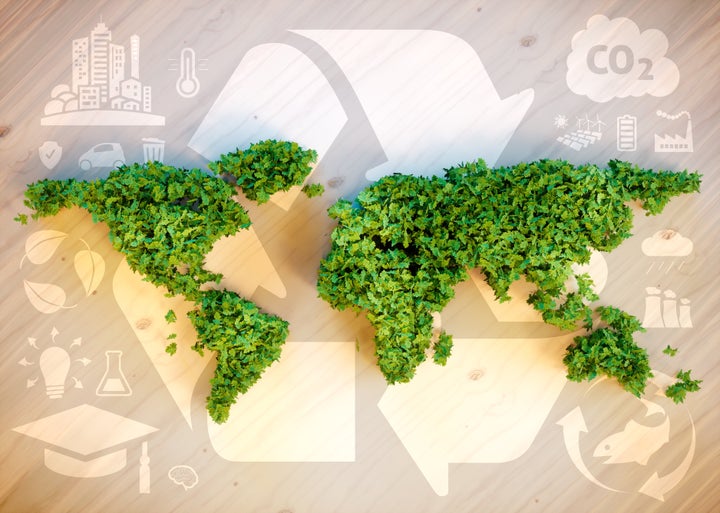
Carbon offsetting is the talk of the town after critics slammed the Duke and Duchess of Sussex for taking private jets to go on holiday. The couple are keen supporters of environmentalism with Prince Harry recently revealing they’ll only have a maximum of two children for the sake of the planet.
But their reported recent trips to Ibiza and Nice via private jet have led some to accuse them of hypocrisy.
One of the jets was loaned to the couple by singer Sir Elton John, who has since come out in defence of the pair saying he paid for the plane and also paid to offset the carbon emissions.
“To maintain a high level of much-needed protection, we provided them with a private jet flight,” he tweeted. “To support Prince Harry’s commitment to the environment, we ensured their flight was carbon neutral.”
But what does that actually mean?
What Is A Carbon Footprint?
Everyone has a carbon footprint. It refers to the amount of carbon dioxide released into the atmosphere as a result of your daily life and activities.
We should care about our carbon footprint because the lower it is, the better it is for the planet – and this action needs to start from home. A staggering 40% of the UK’s carbon emissions come from households, so things like heating, electricity, transport, waste and the flights we take for our holidays.
How To Reduce Your Carbon Footprint
Some ways to reduce your footprint include eating less meat or giving it up completely – adopting a plant-based diet is one of the biggest ways to help fight climate change, a major United Nations report revealed earlier this month.
Car owners should consider driving less and choosing to walk, cycle or take the bus instead. The Science and Technology Select Committee went as far as suggesting the UK government can’t achieve sufficient emissions cuts by swapping existing vehicles for cleaner versions, and instead said car owners should be ditching their vehicles altogether – or at the very least sharing them.
Other ways to reduce your carbon footprint include not buying into fast fashion, endeavouring to plant trees and flowers, unplugging devices so you’re not wasting electricity when you’re out at work – that includes your phone chargers – and eating local and organic produce.
Eating locally grown produce reduces the carbon produced by vehicles having to transport goods. Meanwhile eating organic means your food hasn’t been sprayed with chemicals which can harm the environment.
You can find more ways to reduce your footprint here.
What Is Carbon Offsetting?
Carbon offsetting is the practice of putting funds towards organisations which help the environment by lowering or reducing carbon emissions – an example would be reforestation projects.
Once you’ve offset that, and it results in net zero carbon dioxide emissions in the atmosphere, it’s referred to as “carbon neutral”.
Carbon offsetting is a popular practice for people who frequently travel by aircraft and some airlines like Ryanair offer customers the option to pay a small amount (usually less than £1) to offset their carbon emissions when they book a flight.
While the idea of carbon offsetting sounds positive, there are others who argue that it helps companies and individuals to offset the guilt of the damage that’s being caused to the environment.
Roger Tyers, a research fellow at the University of Southampton, told The Guardian the idea that you can fly ‘carbon neutral’ is “very misleading”.
“A plane that flies today emits carbon today. It’s very hard to know how fast an offset can remove that amount of carbon from the atmosphere,” he explained.
Carbon offsetting provides a mechanism to reduce greenhouse gas emissions “in the most cost-effective and economically-efficient manner”, according to carbonfootprint.com.
The fact is, carbon offsetting alone isn’t the solution to combatting climate change – it has to be done in conjunction with other actions.
You can find carbon offsetting projects to support here.